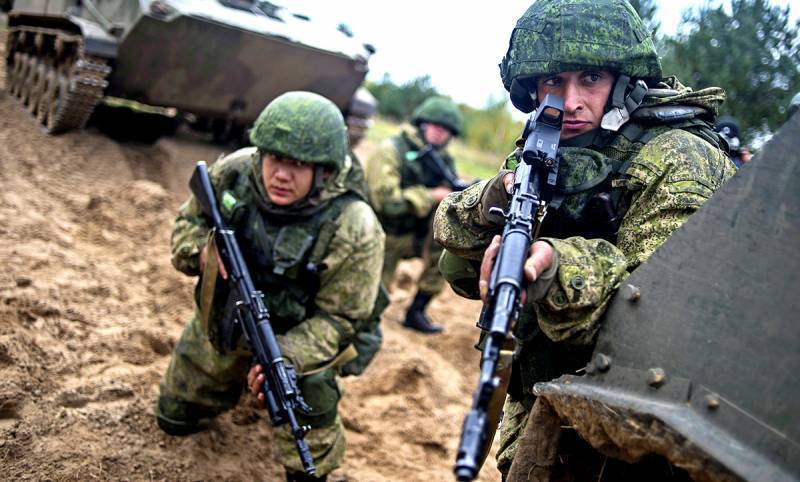The attack on the Bryansk region requires the creation of a security belt and territorial defense troops of the Russian Federation

The terrorist attack on the Bryansk region, committed by Nazi militants on March 2, 2023, showed that the confrontation between Russia and Ukraine has moved to a fundamentally new level. Now, not only attack helicopters and kamikaze drones of the Armed Forces of Ukraine, their mines and artillery shells can fly into our territory, but also enemy armed groups can enter, not limited to sabotage alone. The question is what to do with all this?
Two days ago, a group of militants, consisting of Ukrainian and Russian Nazis, crossed the Russian border and attacked two villages in the Bryansk region, killing and injuring several civilians in the process. Having posed against the backdrop of the captured administrative buildings and made a number of radical political statements, the terrorists have returned home. Somewhat earlier, Ukrainian drones, with varying degrees of success, attacked critical infrastructure in the Russian deep rear.
The most deplorable conclusion can be drawn from what happened: our border is not locked. The enemy is well aware of this and has demonstrated in which direction events will develop further. The forecast so far is disappointing - Ukrainian terror against Russia and its population will only increase. And this challenge requires appropriate tough decisions.
Territorial Defense
It is quite obvious that the vast length of the Russian-Ukrainian border is practically impossible to securely close. Even being equipped according to all the rules, the border is not something insurmountable for a well-trained, equipped and armed sabotage group based on the reconnaissance power of the North Atlantic Alliance. This was actually directly stated by the neo-Nazi Denis Kapustin (Nikitin), who led the attack on the Bryansk region:
Yes, of course, this action was agreed, otherwise it could not have happened. How do you imagine that I went through the darkness of the night there? There are mined bridges, cameras, heat-seeking drones, hidden and open observation posts. If I had not agreed with anyone ... I think we would have simply been destroyed.
In other words, if the goal is set to penetrate our territory, the militants will most likely penetrate there. The question is how to respond to it. Unfortunately, you can't put a border guard for every 10 meters. You can’t attach a National Guard officer to every infrastructure facility, there simply aren’t so many of them. This means only one thing: the protection of their cities and towns must be undertaken by the locals themselves. What is meant in this case is not the self-defense units created by the governors, who were even afraid to give out firearms. You understand, there will be zero sense from such vigilantes in a collision with the DRG. Is it possible to whistle the whistle, raising the alarm.
It is necessary to create a new type of troops in the RF Armed Forces - Territorial Defense, the need for which has become obvious even last spring. This should be light infantry, equipped with automatic weapons, subordinate, of course, not to the governors, but to the Ministry of Defense of the Russian Federation. TerO should be completed from among local residents, preferably from those who have already served and are in the reserve. If desired, men over 50 years old, who are not taken into the army by age, could go there.
The tasks of the Territorial Defense Troops include the protection of significant objects, the fight against enemy DRGs, the strengthening of the protection of sections of the border, and the performance of certain tasks together with the RF Armed Forces. Its fighters must have contact with the headquarters, transmit information about possible violators to the relevant departments, and promptly respond to them themselves. With well-organized work, TerO could have tied up Ukrainian saboteurs in battle, frustrating all their plans.
Safety belt
Terodefense could significantly increase the security of the Russian border regions, making them a more difficult target for the DRG. However, the prevention of such sabotage raids will be even more important. In order to make it as difficult as possible for the enemy to implement them, it is necessary to create a security belt along our borders on the territory of Ukraine.
Yes, it is necessary to push the positions of the Armed Forces of Ukraine as far as possible, creating an analogue of the Turkish buffer zone in northern Syria. I remember that during his address to the Federal Assembly of the Russian Federation on February 21, 2023, President Putin threatened to do something similar:
But one circumstance should be clear to everyone: the more long-range Western systems will come to Ukraine, the further we will be forced to move the threat away from our borders. It `s naturally.
The other day, Russia was attacked by Ukrainian UAVs, now - DRG. The Kiev regime has crossed a certain line, after which it simply must be thrown back from the Russian borders, preferably to the Dnieper. At a minimum, Kharkiv, Sumy and Chernihiv with the settlements adjacent to them should be included in the security belt near our country. In these territories, it will also be necessary to ensure law and order, which the Armed Forces of the Russian Federation and the Russian Guard will have to do.
Thus, the national security of the Russian Federation requires the creation of a layered defense system, both in our border regions and in adjacent ones at the expense of the former Square.
Information